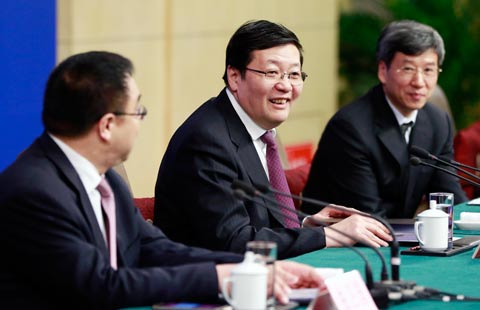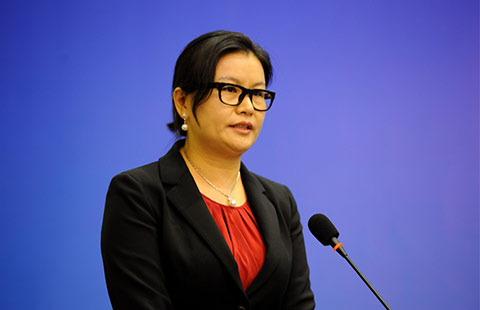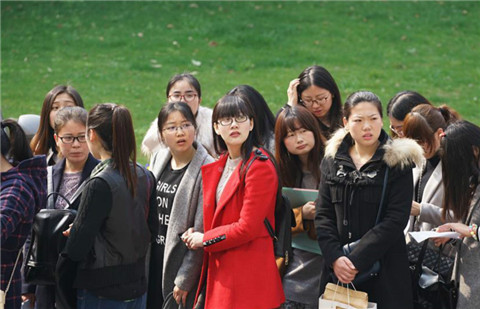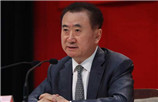NPC presents a promising future of China
By Wu Jiangang (chinadaily.com.cn) Updated: 2016-03-07 14:20Each year about 3,000 delegates, who represent the most powerful or knowledgeable people around China, arrive in Beijing to join an annual meeting of the National People's Congress, or NPC, the country's top legislature.
As 2016 is first year of the 13th five year plan, this year's meeting will focus on crafting China's development plan for the next five years, which makes the meeting especially noticeable. What's more, the meeting, following a year that saw lowest GDP growth rate for last 25 years, may provide crucial details on how the government plans to control a slowdown in growth while avoiding the systematic risk in the short run and the dreaded "middle-income trap" in the long run.
Premier Li Keqiang on Saturday at the opening of NPC presented the previous year's work and the priorities of 13th five year plan.
Although last year's GDP growth rate, 6.9 percent, was the lowest for a quarter of a century, we may congratulate that the transition of economic growth model, which has appealed for many years, finally began.
For domestic reform, there are structural improvements. The service sector's share of GDP rose to 50.5 percent and for the first time it accounted for more than a "half". Though for most of previous years, the national per capita disposable income growth was lower than the economic growth, last year's 7.4 percent growth rate was faster than the economic growth. Surplus capacity, such as steel production, cement and plate glass capacity is being phased out in an accelerating speed. The deposit rate floating limit has been cancelled and deposit insurance system is being introduced, which would pave the way to financial liberalization. The government introduced policies such as the "Made in China 2025" plan and the "Internet Plus" plan to support manufacturing upgrade and public entrepreneurship and innovation.
For opening-up policy, some important steps have been taken. Shanghai Free Trade Zone practice has been extended to Guangdong, Tianjin and Fujian. Renminbi has been identified as IMF's Currency Composition of Foreign Exchange Reserves. Asian Infrastructure Investment Bank was formally established and Silk Road Fund was put into operation.
Though the stock market is volatile, systemic risk has been avoided. In fact, China's stock market is notoriously unrelated to economic fundamentals. But as the capital market will become more important for economic transition, the volatility of stock market shows that the government needs to accumulate more experiences in the capital market management.
Economic transition will be a long process. There are worries for current economic situation.
According to McCarthy's estimation, the ratio of total liability to GDP reached 2.82 in mid-2014 from 2007's 1.58. Among government, financial enterprises, non-financial enterprises and private households, the debt mainly comes from non-financial enterprises, especially State-owned companies. If these companies cannot create enough profit to cover the debts, these debts can become non-performing assets.
The high housing price is also a worry for many. History tells us that such housing prices can easily lead to systemic risk.
- Media digest on the 2016 Work Report
- CEOs at two sessions
- China outlines supply-side structural reform plan
- Small firms raise 26.47b yuan on New Third Board
- Govt encourages agricultural companies to invest in Russia's Far East
- China to revise individual income tax
- Geely, Corun cooperate for new energy car technology
- Committee to help HK entrepreneurs start business on mainland
















